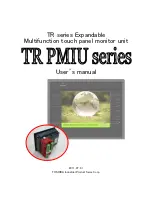
14
The pump group and should normally be wall mounted in close proximity
to the cylinder.
Fig. 5.2A gives a typical layout.
The AST100 Solar Controller should be positioned so that the householder
has easy access with good visibility of the display. Also, consideration has
to be given to routing for connection to the pump group, cylinder and
collector temperature sensors.
Cables supplied with the sensors and control unit are nominal length and
Consideration should be given to the following when selecting a position
for pump group:-
1.
The pump group should be placed close to the storage cylinder to
keep pipe runs to a minimum.
2.
The pump group and pipework should have easy access with good
visibility for changing settings and all necessary maintenance work.
3.
The pump group and controller should be positioned so that they are
inaccessible to children and cannot be tampered with.
may require terminal boxes and extra cable lengths to make connections.
Taking into account the heat transfer fluid within the system may reach
high temperatures, the primary circuit should be copper, stainless steel
(rigid and flexible) or carbon steel braided high temperature hose. Pipe
joints and connections with other system components should also be able
to withstand the working temperatures and pressures. Thought should be
given to preventing corrosion due to dissimilar metals in contact.
All copper pipework must be Kite Marked BS EN1057 1996 Table X half
hard copper tube.
All fittings must be quality brass BS864-2 compression type.
Brass olives are recommended as they produce a better seal.
Brazed or silver soldered joints are acceptable.
The use of joint compounds such as ‘Fernox White’ is recommended for
compression joints.
Owing to the high temperatures of the solar system, plastic pipe and
fittings must not be used.
All fittings and components fitted must be able to withstand
temperatures in excess of 150°.
Soldered and push fit fittings should not be used.
Galvanised steel pipe should not be used.
All external pipework, connections and fittings must be insulated with
suitable high temperature, vermin resistant and UV resistant insulating
materials.
All internal pipework (excluding pipework to the expansion vessel) must
be insulated with suitable high temperature insulating materials.
Insulation of the pipework must only be undertaken after tightening
of the compression fittings and completion of a pressure test - see
section 6.
5.4 P
IPEWORK AND
F
ITTINGS
5.5 I
NSULATION
5.3 C
ONSIDERATIONS FOR
P
OSITIONING
P
UMP
G
ROUP
















































